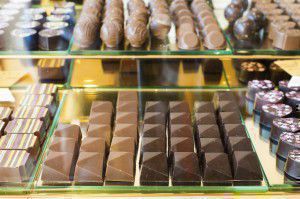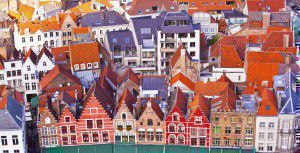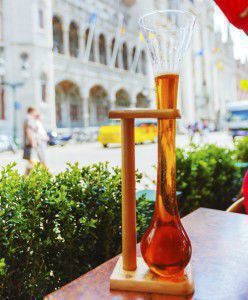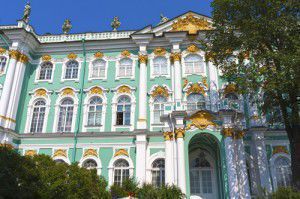Language of the Week: Japanese
As it was the Japanese Grand Prix on Sunday, we have chosen Japanese as our Language of the Week.
First and foremost, our thoughts and good wishes go to Jules Bianchi for his full recovery following his crash on Sunday at Suzuka.
Though in many respects I’m a complete petrol head, I have never found Grand Prix very interesting to watch, lap after lap, rarely exciting in my book. However, when I started to research the history of the Japanese Grand Prix, I found some interesting facts:
Surprisingly it is the only circuit that crosses over itself in a figure of eight and therefore runs both clockwise and anti-clockwise.
The fastest lap ever recorded at the Suzuka circuit is 1:30.54 minutes and was set by Kimi Räikkönen in 2005. To put this into perspective, since the track is 3.387 miles long, if a Cheetah could run at its fastest for further than 1500ft, it would take it approximately 2.7mins!
When looking to learn Japanese it can appear very daunting because of the characters. However, it is one of those languages which is much easier to speak than write. Unlike the majority of languages, nouns do not have genders and there is also no differentiation between singular and plural. Personally, we love both these facts. There are also no pronunciation or tones.
Here are a few fun facts about Japan:
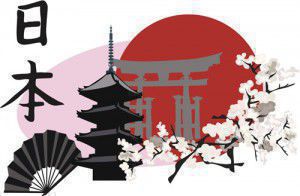 Japan’s trains are among the most punctual in the world, their average delay is just 18 seconds. (What we’d give for that on a rainy Monday in London!)
Japan’s trains are among the most punctual in the world, their average delay is just 18 seconds. (What we’d give for that on a rainy Monday in London!)- Japanese farmers are growing square watermelons, because they are easier to stack and store. (Now that is thinking outside the box! Or is that inside?)
- In Japan there is a cat café where you can and go drink coffee whilst hanging out with cats for hours (Is that a new kind of speed dating opportunity?)
- This one has to be one of our favourites – sleeping on the job is acceptable as it’s a sign of exhaustion from working hard. (Sweet dreams!)
- In Japan there is no Ronald McDonald!! But panic not Big Mac fans, he’s called Donald McDonald due to the lack of a clear “R” sound in Japanese.
- There is an island in Japan called Ōkunoshima or Rabbit Island, since numerous feral rabbits run wild, though apparently they are quite tame!
The challenge for you all this week is another tongue twister:
Niwa no niwa ni wa, niwa no niwatori wa niwaka ni wani wo tabeta
Which means: In (Mr) Niwa’s garden, two chickens suddenly ate a crocodile.
So let’s see your best efforts! Send us your videos on Twitter to @EuroTalk using #itsJapaneasy or send them to us on Facebook – our favourite will win a free uTalk Premium in a language of your choice. Get twisting!
Are you learning Japanese? Or do you have any favourite facts about the language or the country? Let us know in the comments!
Amy
10 reasons to visit… Bruges
Have you ever visited a city that managed to change your mind?
I visited Bruges earlier this year. Unfortunately, I’d accidentally timed my visit to coincide with the enthusiastically named ‘Amateur Arts Festival’, and consequently spent Saturday night with tissues rammed in my ears and arms clenching pillows to my head, as my hotel room shook with the relentless noise of amateur bass. I thought then that the chances of coming up with ten reasons to visit Bruges were pretty slim. Yet on Sunday morning, with the loudspeakers in the square finally silenced and the sun out, I became enchanted with this town that everyone always refers to as a peaceful haven of canals. These are the things which managed to turn my opinion around in the space of just one morning.
1. Trains
I get a bit excited about foreign trains, I know, but going to Bruges presented me with a new wonder: the double decker train. True, this is not localised to Bruges alone but most of the IC trains from Bruxelles seemed to be two storeys high, giving a fantastic view of the very flat countryside (and occasional windmill!) from the top deck. The trains are smooth and cool, and the conductors wear an amusing flat cap as part of their uniform. If you’re just planning a short visit to Bruges, you can get the Eurostar to Brussels and travel on from there (it’s about an hour on the fast train, two hours on the slow train).
2. Canals and boat trips
I wouldn’t say the town is riddled with canals in the same way Venice or Amsterdam are, but they linger in the backstreets and circle the centre so that you stumble across them when you wander off the main street. Surprisingly, there didn’t seem to be any locals drifting around on pleasure boats, although there were a few promising houses whose main doors seemed to lead out directly onto the canal. Activity on the waterways instead seemed to be wholly dominated by the tour boats, taking cargoes of visitors on half hour drives up and down the canal, streaming off fluent speeches in three languages as they went. If you’re only there for a short time, I’d advise a boat trip to get your bearings on the town, and to see some impressive buildings from otherwise undiscovered angles.
3. Chocolate
Belgium is world-famous for chocolate and there are lots of chances to sample it in Bruges. Having been there just after Easter, lots of independent chocolate shops were still displaying elaborate chocolate rabbits and chicken-shaped Easter eggs, as well as the usual array of picturesque truffles and pralines. It being the weekend, there didn’t seem to be anyone around making the chocolates, which was a pity, but I imagine that in the week you’d get a good look at the chocolatiers at work. I was particularly impressed with a small boutique called Stef’s, which sold chocolate tools dusted with cocoa to make them look rusty – I was entirely taken in until I decided it was highly unlikely that a food shop would fill its window with rusty tools.
4. Walking
Bruges, although it also has lots of famous sights, is perfect for the lazier tourist who just wants to meander and drink in the tranquil beauty. Cobbled streets with broad flat pavements and gentle bridges over canals provide a little haven to lose yourself in, and since the whole town is very small you soon enough stumble upon some familiar street or building to set you back on route. Horse drawn carriages trot past every so often, carrying bands of eager-eyed tourists, A particularly pretty walk turned out to be the wide promenade from the station into town (a very short stroll and definitely not worth getting the bus unless you have heavy luggage), which passes a beautiful pink-flowered war memorial and glides into the centre of town and some pretty little cafés.
5. Houses and architecture
The typical Flemish façade presides here, and people seem to take enormous pride in their property, keeping every gate neatly painted and every tile in place. With a maximum height of 30m for any building in the city, the scenery is all low-lying and the views from any high points are panoramic. Some interesting and very modern architecture brings a new sense of style to the traditional steep-roofed old houses.
6. Brewery
At one point home to over 50 breweries, Bruges now has only one active one, De Halve Maan brewery, which runs daily tours around its compact factory in the heart of the city. The tour, in Dutch, French and English, is definitely worth going on as it is stuffed full of information and lots of insights into why beer is healthy (an argument I always like to hear). They’ll also tell you that back in the ’50s the breweries would do home deliveries – you just had to ring a bell for the cart to stop and dispense beer to you directly. I imagine it’s no longer feasible to re-introduce this practice, but we can always dream… Having climbed right to the top of the factory and experienced the lovely view, you are released at ground level to claim your free beer in the spacious bar-restaurant, where one beer can easily turn into a happy afternoon sampling all the brewery’s many offerings.
7. Bike pumps
I’ve seen these around a little more recently – the free foot-operated bicycle pump – and I’m always impressed with a town that spends its money on something as practical and helpful as this.
8. Coffee…
and cake. This doesn’t need much explanation really: in Bruges, you can sit at a table on a cobbled pavement outside a bakery with exquisitely executed cakes and sip a small cup of intense black coffee. Although waffles seem to be the thing to have in Belgium, my favourite snack is the florentine – not a native Belgian sweet but nonetheless available in every cake shop.
9. Beers and beer glasses
Almost as attractive as the idea of sitting in a bar all day trying all the different beers is the idea of trying out all the different glasses. That may sound geeky but there are some really fun ones, including the absurd Kwak beer glass whose bulbous end makes it impossible to put down without the proper stand, and the La Corne drinking horn (which you can clink with a fellow Viking over a drinking toast and which, again, cannot be propped up except with the stand it comes served in). Good bartenders, the Belgians will tell you, will never serve a beer in the wrong glass, and each beer has its own glass, most of which are shaped like a chalice or a tulip.
10. Shopping
If this is what you’re after, you won’t be disappointed in Bruges. With a long, meandering high street full of clothes and chocolate shops, as well as a large market and side streets offering endless souvenirs, you could spend a day just in the shops. And if you’re looking for a bigger centre, Brussels is only an hour or so away by train, and Ghent is neatly stuffed in between the two, to make a weekend of it.
Have you been to Bruges? What were your highlights?
Nat
10 reasons to visit… Russia
Today, we’re going to Russia. At least in spirit. Here are my top ten reasons for visiting Russia – and, trust me, it’s been hard narrowing it down to ten!
1. Train Travel
Travelling by train is arguably the best thing you can do in Russia, so try to leap on one as soon as you arrive. Everything about it is an experience, especially if you’re used to the slender commuter trains of the UK. In Russia, trains are absolutely vast, and appear even more so since you have to climb up into them from ground level. They are slow and ponderous, stopping for twenty minutes or so at each station (enough time for you to get out, stretch your legs and if you’re lucky buy a smoked fish from a vendor on the street) and crawling in between.
Inside, a strange etiquette reigns, so that on the plus side you might be invited to share food and drink with your neighbour, and on the minus side you will be obliged to give up your ground level bunk to anyone older than you who only managed to secure a second tier berth. Presiding over the whole show is the train assistant, who will sell you bed linen and glasses to make tea from the great water boiler at the end of the carriage, and as a special bonus will shake you vigorously by the foot to wake you before your stop.
2. Petersburg
The Hermitage, obviously. You could easily spend a day wandering around it, drinking in all the extravagant beauty. In fact all of Petersburg is nice for walking around dreamily, looking into little museums and palaces and drinking coffee on Nevsky Prospekt.
3. Moscow
Tricky condensing this into one paragraph, but I think the best things to do in Moscow are to get the metro (looking at the sumptuously decorated stations along the way) to Sparrow Hills and there look at the view, then go out to the Novodevichy Cemetery where you’ll find various big names, including Shostakovich, Bulgakov and Mayakovsky. This cemetery shows enormous wealth and the desire to show it off after death, so look out for any especially showy tombstones. Then, of course, Red Square and the Kremlin are worth a good long visit, as well as Lenin’s Mausoleum, if you don’t mind being marched past the body at a fair lick and glowered at by armed guards from every corner within.
4. Hospitality
Although Russians often seem to have a reputation for being a bit moody when you first meet them (especially if you meet them on the street or in a public place, where it is a little frowned upon to show excessive emotion), you can very quickly make solid friends for life in Russia. Advice (on clothing, appearance, relationships, career choices) can be offered pretty freely in a way that can be startling, but is generally very well-intentioned. If you’re invited round for dinner, take a bottle or some chocolates, as there will probably be a very generous spread laid on for you.
5. Dachas
If you’re looking for a little bit of peace and quiet, try to get someone to invite you to their Dachas, as this is where Russians traditionally kick back and relax. Out in the country with big allotment-style gardens around them, dachas often are simple buildings with outside toilets and local wells supplying water. People grow vegetables (lots of them), pickle vegetables (often enough to last them through the winter months), make wine and home-brew alcohol, go fishing, hunt for mushrooms, and generally have a great time.
6. All night life
Go out in most cities in Russia and you can stay out all night. All night! And it’s not just clubs that stay open all hours, but cafes and restaurants too, so that you can actually stay in the same building and have an evening meal, go dancing, get breakfast, sit with a paper and carry on right into lunch, if you want to. A lot of places which look like inoffensive coffee houses and restaurants will acquire some dance-floors and professional dancers come evening, meaning you don’t have to venture out into the cold at all if you don’t want to.
7. The banya
Like with the dacha, if you’re after traditional Russian relaxation then go to a banya. A lot of towns will have public ones (often separate bathing days for men and women) but lots of dachas will have their own private ones. Russians like it pretty hot so if you’re not used to it then it might be a bit of a shock to the system. Extreme, humid heat is followed by being doused with bowls of cold water – relief for a few seconds, at least. Beating each other with birch twigs is also standard practice, but can seem like you’re crossing a barrier if you end up engaging in it with your host.
8. Food
Russian food is all interesting and delicious, but what is particularly excellent is snack food, widely available on kiosks on any street corner. Ever had crisps flavoured with caviar or sour cream and dill? Or dried bread croutons, watermelon-flavoured chewing gum and dried salt fish (a traditional beer snack)? In bars and cafes, beer can be accompanied by fried cheese and deep-fried sticks of bread, or long laces of deeply salted, chewy cheese.
Not that all Russian food is snack food – far from it. Porridge in Russia is so varied that you can have porridge made from a different grain every day of the week, and people take pride in making the traditional soups (you’ll probably come across borshch, the beetroot soup shchi, the cabbage soup, and solyanka, the delicious soup with olives) and salads (of which arguably the best are selyodka pod shuboy – herring under potatoes, mayonnaise and grated beetroot – and salat Olivier, know worldwide as Russian Salad).
9. Weather
Being vast, there is a vast range of weather, but the cold winter is something Russia specialises in and there are lots of excitements around it. Fur markets (selling hats and coats in everything from rabbit to mink) spring up and it becomes a squeeze fitting everyone into the trolleybuses with their extra padding of coats, jumpers, thermals. On the lakes, people will bore holes in the ice and go ice fishing, traditionally accompanied by another, fishy soup, uha, into which you pour a shot of vodka just before eating.
10. Queues
Bit of an odd plus to end on, but queuing is a real art in Russia and it’s such an everyday thing that I quite miss it. The best sort of queue is at a train station, where your first big decision is which queue to join. Don’t be fooled into joining the shortest one, as it might be short because the cashier is about to take her hour-long break. A very small understated sign in the window will give the break times so you can estimate how long it will take the queue to move and choose a line based on that. It’s often best to be armed to the teeth with all the information you might possibly need to book a ticket (train number, date, type of carriage, whether or not you want linen) before getting to the front of the queue, as often the attendants don’t have time for dalliers and won’t hesitate to send you to the back of the queue if they see you floundering.
The other thing to remember about a Russian queue is that when you join it it might be quite a bit longer than it looks. This is because Russians will stand in several queues at once, physically in one and then virtually in another by simply telling the last person in it that they are standing behind them. It’s then the responsibility of that person to advertise the virtual person to anyone who comes along afterwards and of the newcomer to ask who is last (can be a bit confusing when the response to this is to point to someone the far side of the room). Depending on which queue reaches the window first, the queuer will either renounce their place in other queues or niftily dash across to reclaim one of their virtual places.
Got any favourite things about the country you’d like to add? We’d love to hear them! And don’t forget to learn a little of the language before you go.
Nat
